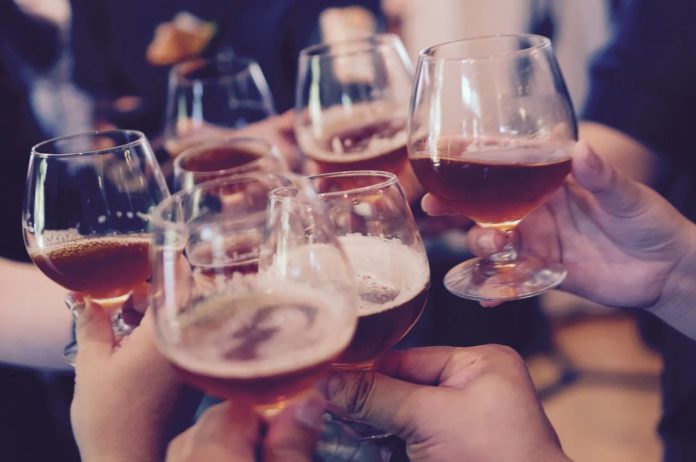While alcohol consumption levels in Ireland have “plateaued” since 2013, people’s consumption remains significantly higher than the government’s 2020 target of no more than 9.1 litres of pure alcohol per person a year.
That is according to a new report from the Health Research Board (HRB), which presents an overview of alcohol consumption and harm in Ireland.
In 2019, on average, every person in Ireland aged 15 and over drank 10.8 litres of pure alcohol a year. That is the equivalent of either 40 bottles of vodka, 113 bottles of wine or 436 pints of beer.
Given that one in four people in Ireland do not drink at all, actual consumption rates among those who do drink “would be much higher than this”.
Ireland ranks 9th among OECD countries in terms of alcohol consumption and 8th in the world when it comes to monthly binge drinking, defined as consuming more than six standard drinks in one sitting.
More than half are hazardous drinkers
Dr Deirdre Mongan, research officer at the HRB and co-author of the report:
“While we have not seen a rise in consumption in recent years, the amount we drink and, in particular, how we drink continues to put us at risk of serious harm.”
“Binge drinking is still widespread, especially among young people. Almost one in four men and one in ten women report that over the past year, they have drunk more in a single sitting than would be suggested as a maximum weekly limit by low-risk guidelines.”
“However, it appears many of us are unaware that our habits may be harmful. More than half of Irish drinkers are classified as hazardous drinkers, yet 74% consider themselves to be a light or moderate drinker.”
“Irish data shows that the heaviest drinkers buy the cheapest alcohol. Minimum Unit Pricing is designed to target the heaviest drinkers who seek the cheapest prices, which means it can have the greatest effect among those who experience the most harm.”
Hazardous drinking across age groups
The report provides several insights into how consumption patterns vary between age groups and genders.
The report states: “Males aged 25-34 years are more likely to be classed as hazardous drinkers and are more likely to present with alcohol-related self-harm and suffer death due to poisoning.”
Older adults aged 65 and over tend to drink less; however, of those who do drink, one-third are hazardous drinkers, with over 40% of men over 65 engaging in monthly binge drinking.
Three in five drinkers over 60 years, who take medication that interacts with alcohol, have reported that they continue to drink while on such medication.
Death
The report’s findings underline the significant harm that alcohol continues to have on the health of people living in Ireland.
1,094 alcohol-related deaths were recorded in 2017 – an average of 3 deaths per day.
Over 70% of those who died of alcohol-related causes were under 65-years-old, highlighting the high levels of premature mortality associated with alcohol.
Impact of alcohol consumption on young people
The report states that over 82% of schoolchildren have consumed their first alcoholic drink by age 17, with the proportion of children reporting to have been ‘really drunk’ on at least one occasion ranging from 5% of 13-year-olds to 62% of 17-year-olds.
Parents were the most common source of alcohol. 35% of 16-year-olds reported getting alcohol from their parents; 19% at a pub, bar or club; and 14% at supermarket, shop or off-license.
Speaking about the trends, Dr Mongan says: “Data on drinking habits among young people shows that the average boy aged 17 is more likely to drink beer and to purchase it in pubs or bars, while the average 17-year-old girl is more likely to drink alcopops and to get their alcohol from their parents.”
Positive findings:
- One in four (25%) Irish people report not drinking alcohol at all in the past year;
- A decrease in the percentage of schoolchildren who drink alcohol or report having been drunk on at least one occasion, particularly among 13-15-year-olds.
The report is set to provide important evidence support for the work of the Public Health Alcohol Research Group, tasked with evaluating the Public Health (Alcohol) Act.





